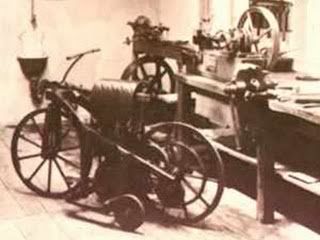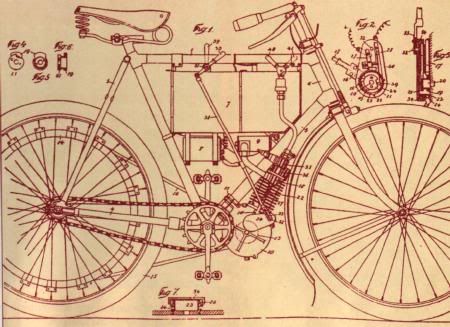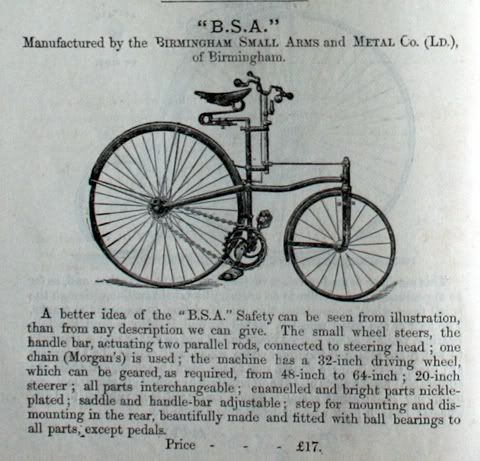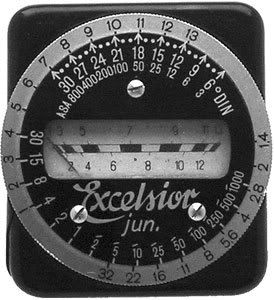BSA was founded in 1861 in the Gun Quarter, Birmingham, England by fourteen gunsmiths of the Birmingham Small Arms Trade Association, who had together supplied arms to the British government during the Crimean War. The company branched out as the gun trade declined; in the 1870s they manufactured the Otto Dicycle, in the 1880s the company began to manufacture bicycles and in 1903 the company's first experimental motorcycle was constructed. Their first prototype automobile was produced in 1907 and the next year the company sold 150 automobiles. By 1909 they were offering a number of motorcycles for sale and in 1910 BSA purchased the British Daimler Company for its automobile engines.
World War One
During World War I, the company returned to arms manufacture and greatly expanded its operations. BSA produced rifles, Lewis guns, shells, motorcycles and other vehicles for the war effort.
Inter-War years
1935 magazine advert for the BSA range of motorcycles and 3-wheeler cars
In 1920, it bought some of the assets of the Aircraft Manufacturing Company (Airco), which had built many important aircraft during the war but had become bankrupt due to the falloff in orders once hostilities ceased. BSA did not go into aviation; the chief designer Geoffrey de Havilland of Airco founded the de Havilland company.
As well as the Daimler car range, BSA re-entered the car market under their own name in 1921 with a V-twin engined light car followed by four-cylinder models up to 1926 when the name was temporarily dropped. In 1929 a new range of 3 and 4 wheel cars appeared and production of these continued until 1936.
In the 1930s the board of directors authorised expenditure on bringing their arms-making equipment back to use - it had been stored at company expense since the end of the Great War in the belief that BSA might again be called upon to perform its patriotic duty.
In 1931 the Lanchester Motor Company was acquired and production of their cars transferred to Daimler's Coventry works.
World War Two
By World War II, BSA had 67 factories and was well positioned to meet the demand for guns and ammunition. BSA operations were also dispersed to other companies under licence. During the war it produced over a million Lee-Enfield rifles, Sten sub machine guns and half a million Browning machine guns. Wartime demands included motorcycle production. BSA supplied 126,000 M20 motorcycles to the armed forces, from 1937 (and later until 1950) plus military bicycles including the folding paratrooper bicycle. At the same time, the Daimler concern was producing armoured cars.
Post war
Sir Bernard Docker was chairman of BSA until 1951 with James Leek CBE Managing Director from 1939, after which Jack Sangster became Managing Director. Post-war, BSA continued to expand the range of metal goods it produced. The BSA Group bought Triumph Motorcycles in 1951, making them the largest producer of motorcycles in the world. The cycle and motor cycle interests of Ariel, Sunbeam and New Hudson were also acquired. Most of these had belonged to Sangster.
In 1960 Daimler was sold off to Jaguar.
The BSA bicycle arm was sold off to Raleigh in 1957. Bicycles under the BSA name are currently manufactured and distributed within India by TI Cycles of India.
The production of guns bearing the BSA name continued beyond the 1957 sale of the bicycle division, but in 1986 BSA Guns was liquidated, the assets bought and renamed BSA Guns (UK) Ltd. The company continues to make air rifles and shotguns, and are still based in Small Heath in Birmingham.
Norton-Villiers-Triumph
The Group continued to expand and acquire throughout the 1950s but by 1965 competition from Japan (in the shape of companies like Honda, Yamaha and Suzuki) and Europe from Jawa / CZ, Bultaco and Husqvarna was eroding BSA's market share. The BSA (and Triumph range) were no longer aligned with the markets; mopeds were displacing scooter sales, superbike engine capacity had risen to 1000 cc and the trials and scrambles areas were now the preserve of European two-strokes. Some poor marketing decisions and expensive projects contributed to substantial losses. For example, the development and production investment of the Ariel 3, an ultra stable 3 wheel moped, was not recouped by sales; the loss has been estimated at some 2 million pounds.
In 1968 BSA announced many changes to its product line of singles, twins and the new three cylinder machine named the "Rocket three" for the 1969 model year. It now concentrated on the more promising USA and to a lesser extent Canadian markets. However, despite the adding of modern accessories, for example, turn signals and even differing versions of the A65 twins for home and export sale, the damage had been done and the end was near.
Reorganisation in 1971 concentrated motorcycle production at Meriden, Triumph's site, with production of components and engines at BSA's Small Heath. At the same time there were redundancies and the selling of assets. Barclays Bank arranged financial backing to the tune of 10 million.
Upgrades and service bulletins continued until 1972, but the less service intensive Japanese bikes had by then flooded the market on both sides of the Atlantic. The merger to Norton Villers was started in late 1972 and for a brief time a Norton 500 single was built with the B50 based unit-single engine but few if any were sold publicly. The BSA unit single B50's 500 cc enjoyed much improvement in the hands of the CCM motorcycle company allowing the basic BSA design to continue until the mid to late 1970s in a competitive form all over Europe.
By 1972, BSA was so moribund that with bankruptcy imminent, and with government backing its motorcycle businesses were absorbed into the Manganese Bronze company, Norton-Villiers, which became Norton-Villiers-Triumph with the intention of producing and marketing Norton and Triumph motorcycles. The shareholders of BSA confirmed the deal. Although the BSA name was left out of the new company's name, a few products continued to be made carrying it until 1973. The final range was just four models: Gold Star 500, 650 Thunderbolt/Lightning and the 750 cc Rocket Three.
However, the plan involved the axing of some brands, large redundancies and consolidation of production at two sites. This scheme to rescue and combine Norton, BSA and Triumph failed in the face of worker resistance. Norton's and BSA's factories were eventually shut down, while Triumph staggered on to fail four years later.
Out of the ashes of receivership, the NVT Motorcycles Ltd company which owned the rights to the BSA marque, was bought-out by the management and renamed the BSA Company.
The BSA bicycle arm had been sold to Raleigh in 1956 and the BSA Winged-B logo was still seen for a while on up-market bicycles.
Limited revival
The BSA company produced military motorcycles (with Rotax engines) and motorcycles for developing countries (with Yamaha engines) under the BSA name. In the later case the old "Bushman" name was recalled to duty - it had been previously used on high ground clearance Bantams sold for the likes of Australian sheep farmers.
In 1991, the BSA (motorcycle) Company merged with Andover Norton International Ltd., to form a new BSA Group, largely producing spare parts for existing motorcycles. In December 1994, BSA Group was taken over by a newly formed BSA Regal Group. The new company, based in Southampton, has a large spares business and has produced a number of limited-edition, retro-styled motorcycles.
Bicycles
Bicycle manufacture was what led BSA into motorcycles. The subsidiary business BSA Bicycles Ltd was sold to Raleigh Industries in 1957.
Motorcycles
BSA was founded in 1863 and began motorcycle division was established in 1880. The first motorized bike was launched in 1905 with a small Minerva engine attached to it.
The first wholly BSA motorcycles were built in 1910, before then engines had come from other manufacturers. BSA Motorcycles Ltd was set up as a subsidiary in 1919.
BSA motorcycles were sold as affordable motorcycles with reasonable performance for the average user. BSA stressed the reliability of their machines, the availability of spares and dealer support. The motorcycles were a mixture of sidevalve and OHV engines offering different performance for different roles, e.g. hauling a sidecar. The bulk of use would be for commuting. BSA motorcycles were also popular with "fleet buyers" in Britain, who (for example) used the Bantams for telegram delivery for the Post Office or motorcycle/sidecar combinations for AA patrols Automobile Association (AA) breakdown help services. This mass market appeal meant they could claim "one in four is a BSA" on advertising.
Machines with better specifications were available for those who wanted more performance or for competition work.
Initially, after World War II, BSA motorcycles were not generally seen as racing machines, compared to the likes of Norton. In the immediate post war period few were entered in races such as the TT races, though this changed dramatically in the Junior Clubman event (smaller engine motorcycles racing over some 3 or 4 laps around one of the Isle of Man courses). In 1947 there were but a couple of BSA mounted riders, but by 1952 BSA were in the majority and in 1956 the makeup was 53 BSA, 1 Norton and 1 Velocette.
To improve US sales, in 1954, for example, BSA entered a team of riders in the 200 mile Daytona beach race with a mixture of single cylinder Gold Stars and twin cylinder Shooting Stars assembled by Roland Pike. The BSA team riders amazingly took first, second, third, fourth, and fifth places with two more riders finishing at 8th and 16th. This was the first case of a one brand sweep.
The BSA factory experienced success in the sport of motocross with Jeff Smith riding a B40 to capture the 1964 and 1965 FIM 500 cc Motocross World Championships. It would be the last year the title would be won by a four-stroke machine until the mid-1990s. A BSA motocross machine was often colloquially known as a "Beezer."
The Birmingham Small Arms (BSA) is a company that produces not just a motorcycle, airplane, taxi, weapons and more. Of course, motorcycles are a big part of the activities of the company and in the 1950s they were producing more than 75,000 bikes.
BSA has a good reputation for a reliable bike and successfully grow with the introduction of S27 (also known as a model Sloper). It was produced for 10 years and is available in 350cc, 500cc and 595cc engines. Throughout the production of slightly modified so that the original design became popular.
During the second world war BSA exposed to attack German forces and make them difficult to produce. However, the BSA continues to produce bicycles and weapons in large quantities. After the Second World War BSA is the largest manufacturer of motorcycles in the world.
In 1937 Walter Handley BSA driving at speeds over 100mph (160 k / h) on the race track curve. This achievement earned him a gold star that later adapted by the BSA in the next motorcycle model called Gold Star. Gold Star became a very popular roadster in the world of race and remained in production until 1963.
The late 1950s introduced a model A7 (500cc) and then the A10 (650cc). Various types of model A is produced by big names like Super Flash or Road Rocket. A very simple model in the view, at an affordable price in its time, not extravagant and reliable is the main reason for them to remain popular. Model A a design trademark of the BSA. In 1962 they were replaced by the A50 (500cc) and A65 (650cc).
BSA produced a 750cc Rocket Three Triple which was developed and manufactured at the company's financial condition is difficult. Because of substantial losses, the company eventually purchased by the company BSA Norton Villiers Triumph motorcycle and was last produced in 1973.
Categories:
-BSA













